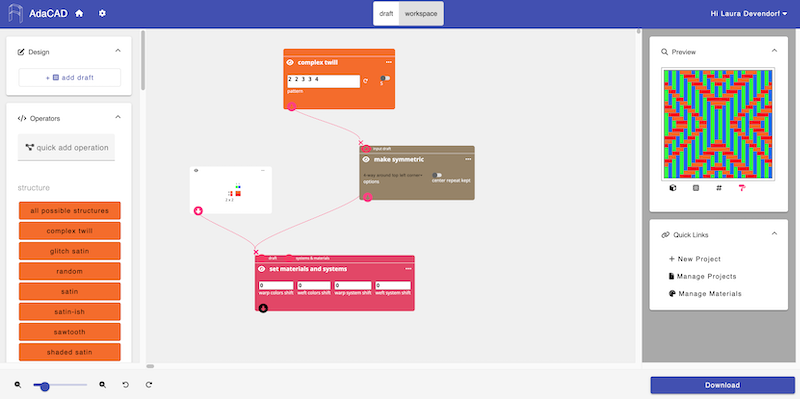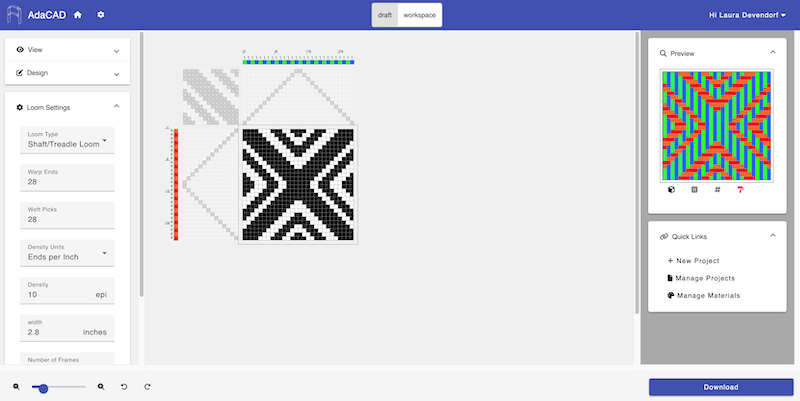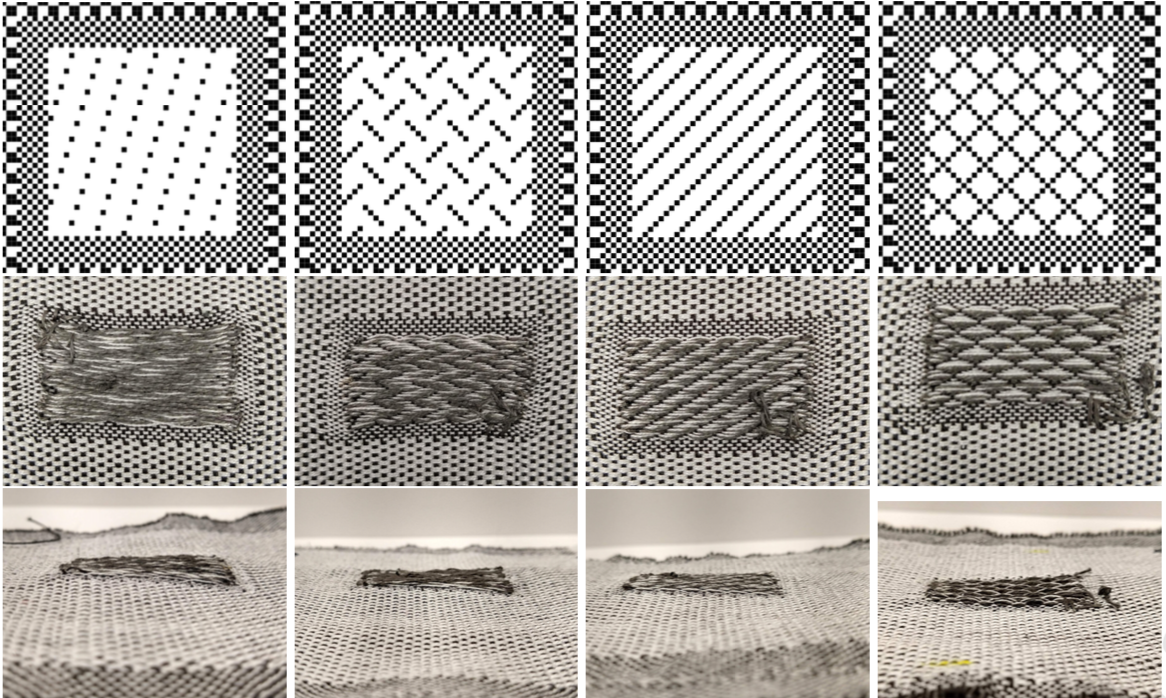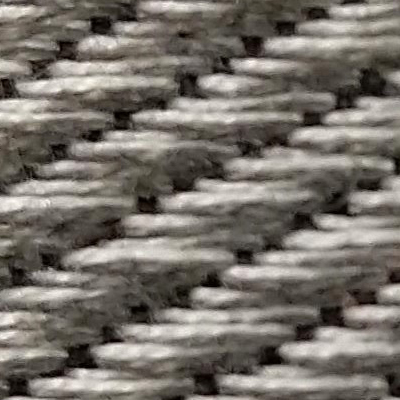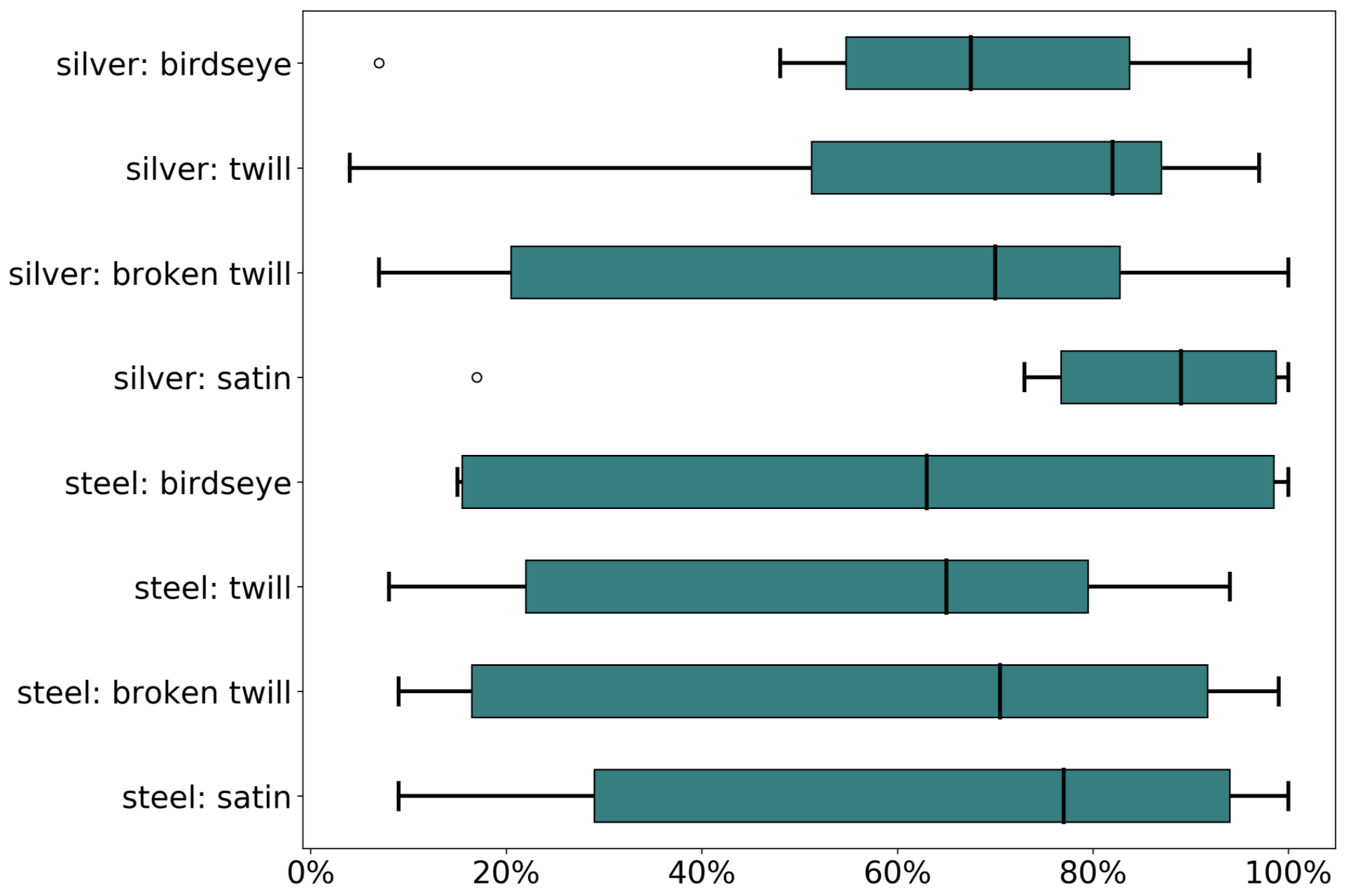Growing AdaCAD into an Eco-System
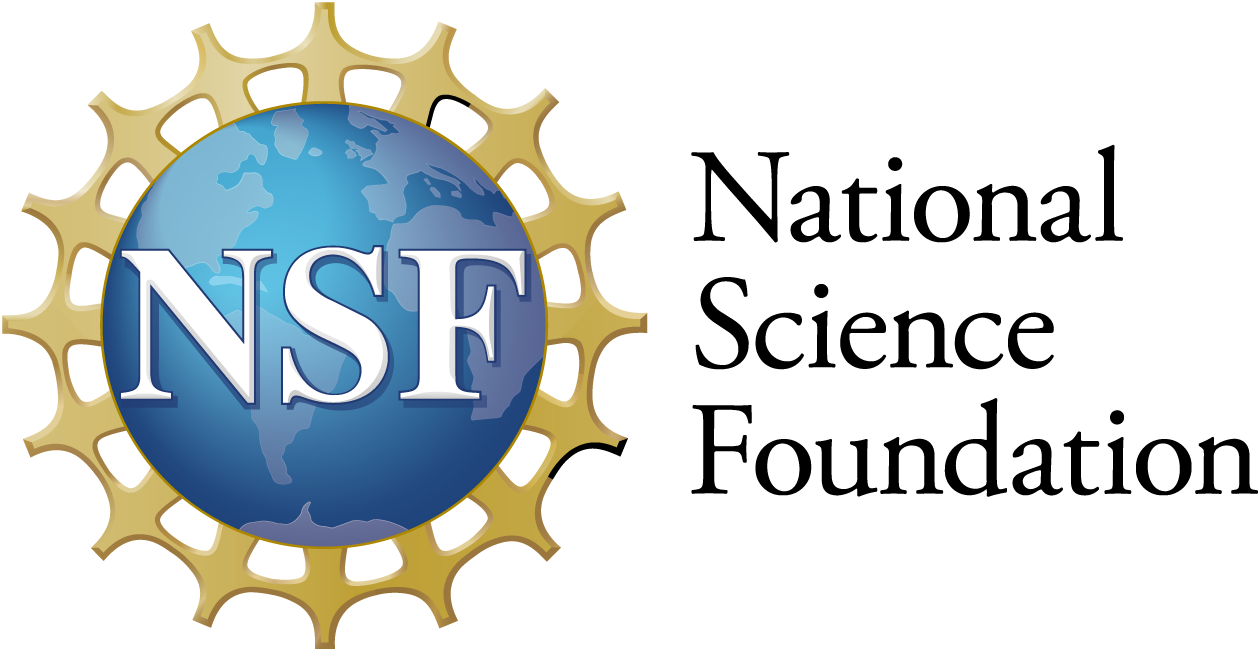
We're delighted to announce that we have been awarded a "Pathways to Support Open-Source Ecosystems" Grant from the National Science Foundation. This "Phase 1" grant will support us in planning us a transition from AdaCAD as a project that we (the Unstable Design Lab) run to a project that engages a broader and more distributed community of weavers and engineers in its future development.
In this planning year, we will conduct interviews and develop community-engagement activities that will help us try out new directions for the future. The research we have done so far suggests should focus on making accessible tutorials, highlighting the unique capabilities of parametric design in the domain of weave drafting, and providing more opportunities for community engagement and support.
We'd like to thank you for sticking with us and AdaCAD so far. As a project in development, you have been working with us through multiple version, improvements, and interface changes. We appreciate the care and encouragement so many of you have provided and we are committed to working collectively to build something that celebrates woven patterning. If you have any thoughts or suggestions for us, you are always welcome to send them to unstabledesignlab@gmail.com.
